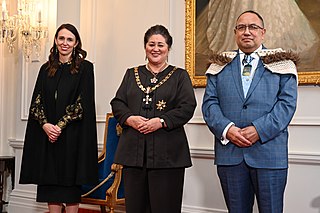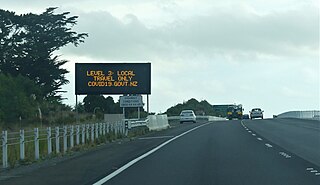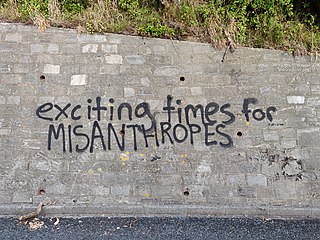
The Order of precedence in New Zealand is a guide to the relative seniority of constitutional office holders and certain others, to be followed, as appropriate at State and official functions. The previous order of precedence was revoked and Queen Elizabeth II approved the following Order of Precedence in New Zealand effective 20 September 2018:
- The Monarch of New Zealand.
- The Governor-General or, while acting in the place of the Governor-General, the officer administering the Government
- The Prime Minister
- The Speaker of the House of Representatives
- The Chief Justice
- The Dean of the Diplomatic Corps
- The Deputy Prime Minister
- Ministers of the Crown
- Former Governors-General
- Ambassadors and High Commissioners in New Zealand and Chargés d’Affaires accredited to New Zealand.
- The Leader of the Opposition in the House of Representatives
- Leaders, including co-leaders and joint leaders, of political parties represented in the House of Representatives, other than Ministers of the Crown.
- Members of the House of Representatives. There is no established order of precedence over members of parliament in general, although each party has its internal ranking.
- Judges of the Supreme Court of New Zealand, the Court of Appeal and the High Court of New Zealand.
- Former Prime Ministers, former Speakers of the House of Representatives, former Chief Justices, and members of the Privy Council.
- Mayors of territorial authorities and chairpersons of regional councils, while in their own cities, districts and regions. In 1989, boroughs and counties were amalgamated into district councils. District mayors, and the Chatham Islands mayor could expect to be accorded this same precedence.
- The Public Service Commissioner, Chief of Defence Force, Commissioner of Police, and Officers of Parliament .
- The Solicitor-General, Clerk of the House of Representatives, and Clerk of the Executive Council when attending a function involving the exercise of the position’s specific responsibilities.
- Chief executives of public service and non-public service departments.
- The Vice Chief of Defence Force, and Chiefs of Navy, Army and Air Force, and other statutory office holders.
- Consuls-General and Consuls of countries without diplomatic representation in New Zealand.
- Members of New Zealand and British orders, and holders of decorations and medals in accordance with the Order of Wear in New Zealand.

Robert Ian Fyfe is a New Zealand businessman and a former chief executive officer (CEO) of New Zealand national airline Air New Zealand.

Air Vice Marshal Peter James Stockwell, is a retired senior Royal New Zealand Air Force (RNZAF) commander and former Chief of Air Force.
Chief of Air Force (CAF) is the most senior appointment in the Royal New Zealand Air Force, responsible to the Chief of Defence Force. The post was originally known as the Chief of the Air Staff.

Lieutenant General Timothy James Keating is a former New Zealand Army officer and Chief of the New Zealand Defence Force. He was appointed Chief of Defence Force in 2014, immediately following his tenure as Vice Chief of Defence Force. He served as Chief of Army from 2011 to 2012.

Air Marshal Kevin Ronald Short, is a retired Royal New Zealand Air Force officer. He served as Chief of Defence Force from 1 July 2018 to 6 June 2024.
Air Marshal Carey William Adamson, was a senior officer of the Royal New Zealand Air Force.
The COVID-19 pandemic in New Zealand was part of the pandemic of coronavirus disease 2019 caused by severe acute respiratory syndrome coronavirus 2. The first case of the disease in New Zealand was reported on 28 February 2020. The country recorded over 2,274,370 cases. Over 3,000 people died as a result of the pandemic, with cases recorded in all twenty district health board (DHB) areas. The pandemic first peaked in early April 2020, with 89 new cases recorded per day and 929 active cases. Cases peaked again in October 2021 with 134 new cases reported on 22 October.

The COVID-19 pandemic in Samoa is part of the ongoing worldwide pandemic of coronavirus disease 2019 caused by severe acute respiratory syndrome coronavirus 2. The virus was confirmed to have reached Samoa on 18 November 2020. The country reported its second case on 27 November.

Sir Ashley Robin Bloomfield is a New Zealand public health official. He served as the chief executive of the Ministry of Health and the country's Director-General of Health from 2018 to 2022. He was the public-facing health specialist liaising with the media during the COVID-19 pandemic in New Zealand on behalf of the government, from the first press conference on 27 January 2020.

The COVID-19 pandemic in the Cook Islands is part of the ongoing worldwide pandemic of coronavirus disease 2019 caused by severe acute respiratory syndrome coronavirus 2. As of 30 October 2021, 12,841 first doses and 12,498 second doses of vaccine had been administered, which represents over 97% of the eligible population (12+) fully vaccinated.

The COVID-19 pandemic in Niue is part of the ongoing worldwide pandemic of coronavirus disease 2019 caused by severe acute respiratory syndrome coronavirus 2. Niue reported its first confirmed case on 9 March 2022.

Managed isolation and quarantine (MIQ) was a quarantine system implemented by the New Zealand Government during the country's COVID-19 pandemic. Under the system, people entering New Zealand, COVID-19 positive cases and some of their close contacts were required to isolate at an MIQ facility for 14 days. Compulsory managed isolation and quarantine was announced by Prime Minister Jacinda Ardern at the 1pm press conference on 9 April 2020, with the system coming into effect for people boarding flights to New Zealand from midnight that day. The government contracted dozens of hotels in five cities that were exclusively used as managed isolation facilities. The task was organised by the Managed Isolation and Quarantine (MIQ) unit, part of the COVID-19 All-of-Government Response Group.

This article documents the chronology of the response to the COVID-19 pandemic in November 2020. Some developments may become known or fully understood only in retrospect. Reporting on this pandemic began in December 2019.

The New Zealand Government responded to the COVID-19 pandemic in New Zealand in various ways. In early February 2020, the Government imposed travel restrictions on China in response to the global COVID-19 pandemic originating in Wuhan and also repatriated citizens and residents from Wuhan. Following the country's first case which originated in Iran, the Government imposed travel restrictions on Iran.

This article documents the chronology of the response to the COVID-19 pandemic in April 2021, which originated in Wuhan, China in December 2019. Some developments may become known or fully understood only in retrospect. Reporting on this pandemic began in December 2019.

The COVID-19 pandemic in New Zealand has had far-reaching consequences on the country that went beyond the spread of the disease itself and efforts to eliminate it, including education, faith communities, Māori, mass gatherings, sports, recreation, and travel. In addition, there were several recorded cases of lockdown violations, leaks, and misinformation about the COVID-19 virus and vaccines.
Charlotte Bellis is a New Zealand journalist who previously reported for Al Jazeera. Bellis attracted media attention in August 2021 after interviewing a senior Taliban leader Abdul Qahar Balkhi following the fall of Kabul. In early 2022, Bellis attracted media attention in New Zealand and abroad after highlighting her difficulty in returning home due to the country's tough COVID-19 border restrictions.

This article documents the chronology of the response to the COVID-19 pandemic in November 2021, which originated in Wuhan, China in December 2019. Some developments may become known or fully understood only in retrospect. Reporting on this pandemic began in December 2019.
Rose King is a New Zealand army officer and the first woman career soldier in New Zealand to be promoted to the rank of brigadier. She was in the Royal New Zealand Electrical and Mechanical Engineers Corps, and in 2021 was appointed joint head of managed isolation and quarantine (MIQ) in New Zealand.













